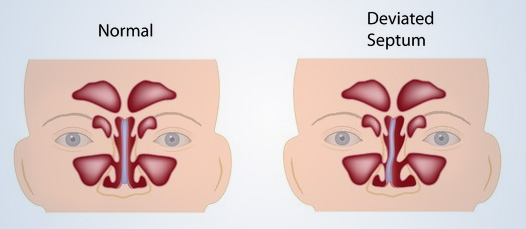The nasal cavity is divided into two parts by a thin, vertical wall called the nasal septum. It is composed of bone and cartilage, and its role is to support the nose and direct airflow. There are three horizontal outgrowths on the sides of the nasal cavity, which are called nasal conchae or turbinates.
The nasal passage can become blocked for a number of reasons. For example, the nasal septum can be deviated (that is when either the cartilage or the bone is crooked). Other possible reasons include enlarged inferior nasal turbinates, hypertrophic pharyngeal tonsils (adenoids), nasal polyps, and tumors.
If you have a deviated septum which causes troublesome symptoms you may be a candidate for septoplasty.




